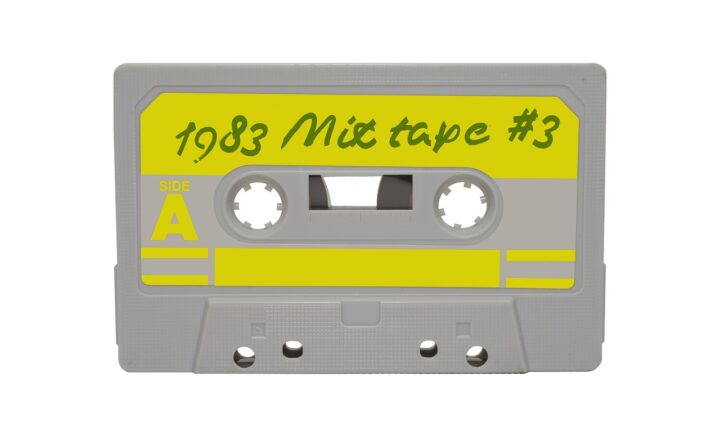Revving Up Nostalgia: Exploring the Iconic Cars That Defined the 70s and 80s
November 18, 2024

The automotive landscape of the 1970s and 1980s is often regarded as a golden era of design, performance, and innovation. During this time, manufacturers produced cars that not only moved people from point A to B but also encapsulated the spirit of the times — a blend of bold designs, groundbreaking technologies, and rebellious flair. As we dive into this journey of nostalgia, we will explore the cars that came to symbolize the decade’s diverse culture, passion for speed, and a longing for freedom on the open road.
1. The Oil Crisis and Its Impact on Automotive Design
The oil crises of the 1970s had a profound impact on the automotive industry. With soaring gas prices and concerns over fuel efficiency, manufacturers quickly adapted their strategies to appeal to a more economically-minded consumer. Compact cars began to gain popularity, leading to the rise of models that would eventually become classics.
These changes not only influenced the types of vehicles produced but also led to innovative design shifts. Automakers began focusing on lighter vehicles with smaller, fuel-efficient engines, leading to the emergence of several legendary models that represented this era.
2. Ford Mustang: The Pony Car Legend
The Ford Mustang made its debut in 1964, but it truly came into its own during the 70s and 80s. Known as the quintessential pony car, the Mustang embodied American muscle. With its aggressive styling and powerful engine options, it was a symbol of freedom and adventure, attracting young enthusiasts across the nation.
In the 1970s, the Mustang underwent several changes to meet safety regulations and fuel economy standards. The introduction of the Mustang II was representative of this shift. Although its smaller size and less powerful engines drew mixed reactions, it remained a popular choice, showcasing the brand’s adaptability.
By the early 1980s, the Mustang returned to its roots with the unveiling of the third-generation model, which offered a more performance-focused driving experience and reinforced its legacy as an iconic automobile.
3. Chevrolet Camaro: The Fierce Rival
Another powerhouse from this era was the Chevrolet Camaro, introduced in 1967 as a direct competitor to the Mustang. The Camaro gained immense popularity through the 70s and 80s, known for its stylish appearance and robust performance.
The second-generation Camaro, which debuted in 1970, was characterized by its sleek lines and aggressive stance. It established its place in pop culture through notable appearances in movies and TV shows, becoming synonymous with the rebellious spirit of the period.
In the 1980s, the Camaro embraced technology with the addition of fuel-injected engines and a focus on aerodynamic design, solidifying its place as one of America’s favorite muscle cars.
4. Datsun 240Z: The Japanese Sports Car Revolution
While American muscle cars dominated the streets, the Datsun 240Z (later known as the Nissan Z) brought a new flavor to the market. Introduced in the late 60s, this affordable sports car captured the essence of performance and design that appealed to a global audience. The 240Z merged lightweight construction with a powerful inline-six engine and offered an exhilarating driving experience.
By the 70s, the Z-car continued to evolve, leading to increased popularity among sports car enthusiasts. Its sleek profile, combined with cutting-edge engineering, made it a contender against its European rivals, proving that Japan was a force in the world of sports cars.
5. Volkswagen Beetle: The Timeless Classic
No retrospective on iconic cars would be complete without mentioning the Volkswagen Beetle. Originally designed in the 1930s, the Beetle underwent significant changes through the 70s and 80s but maintained its beloved shape and quirky character.
The Beetle became a symbol of counter-culture, resonating with the youth of the era. Whether it was its appearance in films or its association with peace movements, the car transcended its role as mere transportation. Despite the changes in consumer preferences, the Beetle continued to charm drivers with its reliability and unique design.
By the late 1970s, the car was adapted to meet stricter emissions and safety standards while maintaining its essence. It remains a testament to timeless design and functionality.
6. DeLorean DMC-12: A Futuristic Icon
The DeLorean DMC-12 stands as one of the most iconic vehicles to emerge from the 1980s. Its unique stainless steel body and distinctive gullwing doors made it an instant classic — not to mention its fantastical role in the *Back to the Future* trilogy.
Despite its short production run from 1981 to 1983, the DeLorean represented a forward-thinking approach to automotive design. While it struggled with quality control issues and financial challenges, its legacy endures, particularly among car enthusiasts and pop culture aficionados.
The DeLorean remains a symbol of innovation and a visionary mindset, encapsulating the hope and excitement of the 1980s.
7. Conclusion: Driving into the Future with Nostalgic Roots
The cars of the 70s and 80s were more than just vehicles; they were a reflection of the societal shifts, technological advances, and cultural revolutions of their time. Each model tells a story, evoking a sense of nostalgia that resonates with many people today.
As we continue to see advancements in electric vehicles and autonomous driving technology, the essence of these classic cars remains influential. They pave the way for future innovations while reminding us of the rich history that has shaped the automotive industry. Whether cruising down a highway in a vintage muscle car or remembering the charm of earlier designs, the cars of the 70s and 80s will forever hold a special place in automotive history and in our hearts.
Embracing this nostalgia not only allows us to appreciate these iconic vehicles but also inspires future generations to forge their path in the automotive world.








